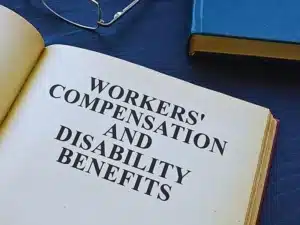The average personal injury settlement can range from $3,000 to $75,000. Claimants should be careful when estimating the settlement amount they are likely to receive using a typical personal injury settlement calculator. The numbers vary from case to case. Only an attorney who has successfully handled multiple personal injury cases can provide a reasonable prediction.

Most cases have higher or lower payouts than the average settlements. Some are outliers – it’s not uncommon for injury victims to collect millions of dollars in settlements. Cases that attract extremely high settlement amounts involve unique factors. These cases may include punitive damages or other unexpected damages. A personal injury lawyer can help a victim determine where his or her claim falls on the scope of average personal injury settlements.
Settlements: The Most Common Outcome in Personal Injury Cases
Only a few personal injury cases resolve at trial. Various surveys show that only 4% of these cases reach the trial stage. About 67% of personal injury cases settle out of court.

Trials involve a lengthy litigation process and can be costly. A trial is also risky due to the unpredictable nature of juries. An injured party might either collect a higher award compared to what the insurance provider was ready to offer or end up recovering nothing. For these reasons, insurance adjusters and lawyers often aim at settling.
Upon agreeing, both parties sign a personal injury settlement agreement. This agreement spells out the settlement conditions and prevents the plaintiff from taking further legal action later. Once the judge receives the settlement agreement and signs off on it, it becomes legally binding to everyone involved. A typical personal injury compensation includes past, current, and future medical expenses, lost wages or profits, reduced earning capacity, pain and suffering, and repair costs of damaged property.
A settlement does not include punitive damages. If a plaintiff has evidence of egregious conduct or gross negligence by the defendant, going to trial is a wise decision.
Can You Reject a Settlement Offer?
A plaintiff has the right to reject any settlement offer received from an insurance company or at-fault party. The plaintiff may have several valid reasons to turn down a settlement offer and file a lawsuit. Perhaps the two parties have disagreed on critical issues, such as who was liable for the accident or the severity of the plaintiff’s injuries. Maybe the plaintiff just wants a “day in court.”
No matter the reason, reviewing and strategically responding to any settlement offer received is a good idea. An aggressive lawyer can help the plaintiff determine the best action to take. In most cases, negotiations do not stop when the plaintiff turns down a settlement offer. Instead, the plaintiff makes a counteroffer through a comprehensive demand letter.
The demand letter allows the plaintiff to tell his or her side of the story. It describes how the accident occurred, evidence that positions the defendant as the at-fault party, and the extent of the plaintiff’s injuries. It also describes the current medical treatment and expected treatment in the future.
In the demand letter, the plaintiff (or plaintiff’s lawyer) will present evidence-supported arguments to demonstrate why the initial settlement from the other party is too low. The plaintiff will conclude the letter with a counteroffer – an amount he or she will be ready to accept to close the case.
Is the Settlement Money Taxable?
The purpose of the settlement money determines whether or not it is subject to taxation. Settlement money meant to cover physical injuries or illness will not be taxed as income, provided the plaintiff did not claim any “medical cost” deductions associated with that same injury or illness in the past.
Any percentage of the settlement deemed an interest payment is subject to taxation. Any portion of the injury settlement intended to cover pain and suffering is taxable. Any punitive damages added to the settlement are also taxable.
How Much Compensation is Typical in Personal Injury Claims?
Personal injury claims have a broad scope of possibilities due to the unique circumstances involved in each specific case. The average payout for a personal injury claim can range from $3,000 to $25,000, with a substantial number of plaintiffs collecting more than $25,000. Some plaintiffs collect more than $75,000.
An example of a personal injury settlement amount is the defective hip replacement settlement estimated at over $400 million. This settlement is part of an agreement by Johnson and Johnson to compensate thousands of patients who were harmed by these defective implants. Other personal injury settlement amounts examples include:
- A hit and run accident – $145,000
- A golf cart accident – $200,000
- A car vs. bicycle accident – $225,000
- Food poisoning – $800,000
- A serious motor vehicle accident – $5 million
- An assault – $11.5 million
The above examples show that personal injury settlements can sometimes be quite high above the average. The type of the case, circumstances involved, and inputs of a legal representative will determine the outcome of the case.
What Affects the Outcome of Personal Injury Claims?
A specific formula for determining the value or outcome of personal injury claims does not exist. Knowing the factors that often affect how much personal injury claims are worth can help plaintiffs manage their expectations and navigate negotiations more skillfully. These factors include:
Nature and Extent of Injuries
An accident that causes more severe injuries usually results in larger settlements due to the pain and suffering involved. Injured parties with severe injuries like spinal cord injuries or broken bones may receive larger settlements than their counterparts with soft-tissue injuries, such as bruising or sprains. Victims with permanent injuries, including traumatic brain injury, disfigurement, or weakened mobility, might receive larger settlements.
Injuries that significantly disrupt the victim’s everyday life are likely to result in a larger settlement. Some injuries may, for instance, keep the victim from performing day-to-day activities like walking or standing. Others may leave the victim unable to enjoy hobbies, such as traveling or playing sports.
Insurance Policy Limits
Insurance companies settle most personal injury claims. The policy limit of the at-fault party’s insurance company will, however, significantly influence the total value of the injury claim. If the policy limit is less than the total losses of the victim, the victim may recover the remainder by suing the at-fault party directly.
Evidence Availability
The availability of evidence to prove the injury claim’s total value and the other party’s liability will significantly impact the settlement value. If the claim has inadequate evidence, the victim cannot cover the full extent of the losses or damages.
Availability of Legal Representation
Involving a lawyer from the onset is a crucial yet overlooked factor that affects the outcome of personal injury claims. More than 90% of plaintiffs who involve a lawyer enter a personal injury settlement agreement. That figure is significantly higher than 51% of plaintiffs who enter a settlement agreement without legal representation.
The difference is much higher as far as the amount of compensation collected by the two groups is involved. Plaintiffs with a lawyer receive an average of $77,600, while those without a lawyer take home an average of $17,600. That said, it is best to understand how a car accident lawyer can maximize your settlement, especially for those injured in a car accident.
How Much is Your Case Worth?
The amount of damages involved determines the value of a personal injury case. The at-fault party typically pays damages to the victim to cover the losses suffered by the victim due to the accident or injury. Both parties can agree on the total value of damages in a settlement. If they disagree, a jury will be responsible for determining the final value of damages in the case.
Losses suffered by plaintiffs in most personal injury claims fall under either economic or non-economic damages. Economic damages consist of present and future financial losses. These expenses are usually derived from amounts that get documented in numbers during the recovery journey. A dollar value can be put to these losses, making them easy to calculate.
Non-economic damages cover the physical and mental effects caused by the accident and injury. Setting a dollar value for these types of losses is hard, making non-economic damages more challenging to calculate.
How Long Do Personal Injury Cases Take to Resolve
Personal injury cases take 1-3 years to resolve either in a settlement or at trial. That is one of the findings of studies carried out by the United States Department of Justice and the National Center for State Courts. The more parts and factors involved in a case, the longer it takes for the injury case to resolve. The following are factors that affect the time it takes for a personal injury case to settle:
The Scope of the Claim
Elements of the case may influence the time it takes an average claim to resolve. If the at-fault party is an entity or several individuals, this could considerably slow down the case’s progress. The lawyer may need more time to gather evidence as well as find and interview witnesses. The judge or jury may need more time to deliberate on the matter and issue a verdict.
The Type of Personal Injury Claim
Plaintiffs in premises liability lawsuits may be wondering, “how long does it take to recover compensation for trip and fall injuries?” The same applies to plaintiffs in bad faith insurance, product liability, nursing home negligence, car accident, and other personal injury cases. The time it takes to resolve the issue may vary from one personal injury claim to another.
Some elements of these claims require plaintiffs to demonstrate negligence, a violation of the duty of care, or a contract breach that resulted in their injury. The more parts involved in the claim, the longer the lawyer may take to prove the matter.
Proving negligence may also affect the case’s progress, as the plaintiff must prove all the elements and justify the compensation that would fully cover all his or her damages or losses. The involvement of a professional witness, such as a medical practitioner, forensic scientist, or accident reconstructionist, could further delay the case.





